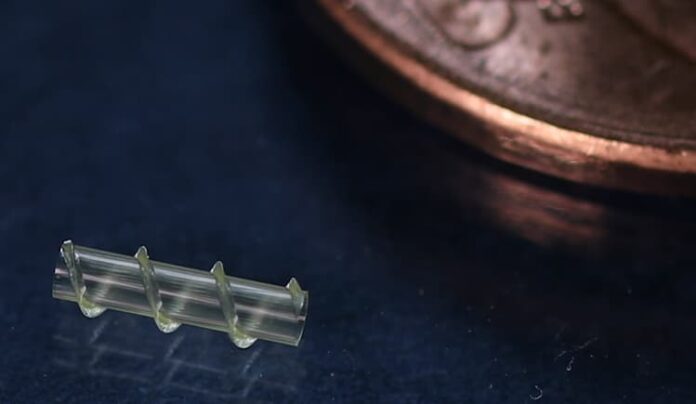What is a Bionaut™? Think the Isaac Asimov novel, Fantastic Voyage and you may have an inkling of what the technology is all about: a custom-engineered microbot that can enter the brain stem to treat central nervous system and brain disorders and diseases.
In the Asimov novel, the focus is on miniaturizing technology to send a submarine and human crew into the bloodstream and across the brain barrier to save the mind and life of an important scientist. That’s not the case here. No humans are being miniaturized.
Developed by Bionaut Labs with headquarters in Los Angeles, and research and development facilities in Israel and at the Max Planck Institute in Germany, a Bionaut is a remote-controlled microbot that comes in different designs to deliver biologics, nucleic acids, and small molecule therapies th the brain and central nervous system where traditional treatments have largely been unsuccessful or highly risky.
Bionauts are individually constructed with different form factors. No more than a millimeter in size, they come with a cargo compartment and contain moving parts that respond to a remote magnetic controller used to guide them to a targeted area in the brain or brain stem to deliver therapeutic payloads.
In a March 3, 2021 press release, Dr. Santosh Kesari, Chair of the Department of Translational Neurosciences and Director of Neuro-Oncology at St. John’s Cancer Institute, Santa Monica, California, is quoted stating, “The brain is uniquely designed to protect itself from external factors. This makes medical intervention in the central nervous system extremely challenging. The Bionaut technology opens the door to precise treatment for a wide variety of severe brain disorders.”
For Brainstem glioma, a tumor that impacts children and young adults, today’s cure rates are low. But with the Bionaut in recent laboratory mouse tests with human glioma tumors, glioma treatment and elimination have been successful. Clinical human trials should follow in 2023.
What’s in Bionauts future? Delivery of new therapeutic capabilities such as antisense, siRNA, gene therapy, CRISPR-Cas9, and oncolytic viruses. With precision delivery, the Bionaut should make it possible to tackle Parkinson’s, Huntington’s Disease, Hydrocephalus Stroke, Focal Epilepsy, and more entering through the brain stem or through direct brain insertion.
As mentioned before, Bionauts come in a wide range of configurations, sizes, payloads, shapes, and topologies based on the desired task, disease and site location. The ability to construct different versions provides infinite flexibility and offers safer alternatives for treating specific brain and central nervous system diseases. The potential is to be able to deliver continuous therapeutics and disease monitoring using customized delivery to do a wide range of medical interventions including brain stimulation, microsurgery, and ablation.
The company was estalbished in 2016 by founders Aviad Maizels and Michael Shpigelmacher. They were motivated to find a means to do precision medicine using microbots, a burgeoning field of discovery and invention. Working with the Max Planck Institute, and with medical robot pioneers in Israel, Bionaut is an expression of two different evolutionary steps in medicine: using micro-robotics inside us to diagnose and treat diseases, and personalized medical therapies where drug delivery isn’t done through whole-body diffusion with all the potential consequences of side effects.
Both of these medical technology trends should lead to far better outcomes for patients and in the case of Bionaut, alleviate suffering from those with brain and central nervous system diseases, let’s hope, in the very near future.









